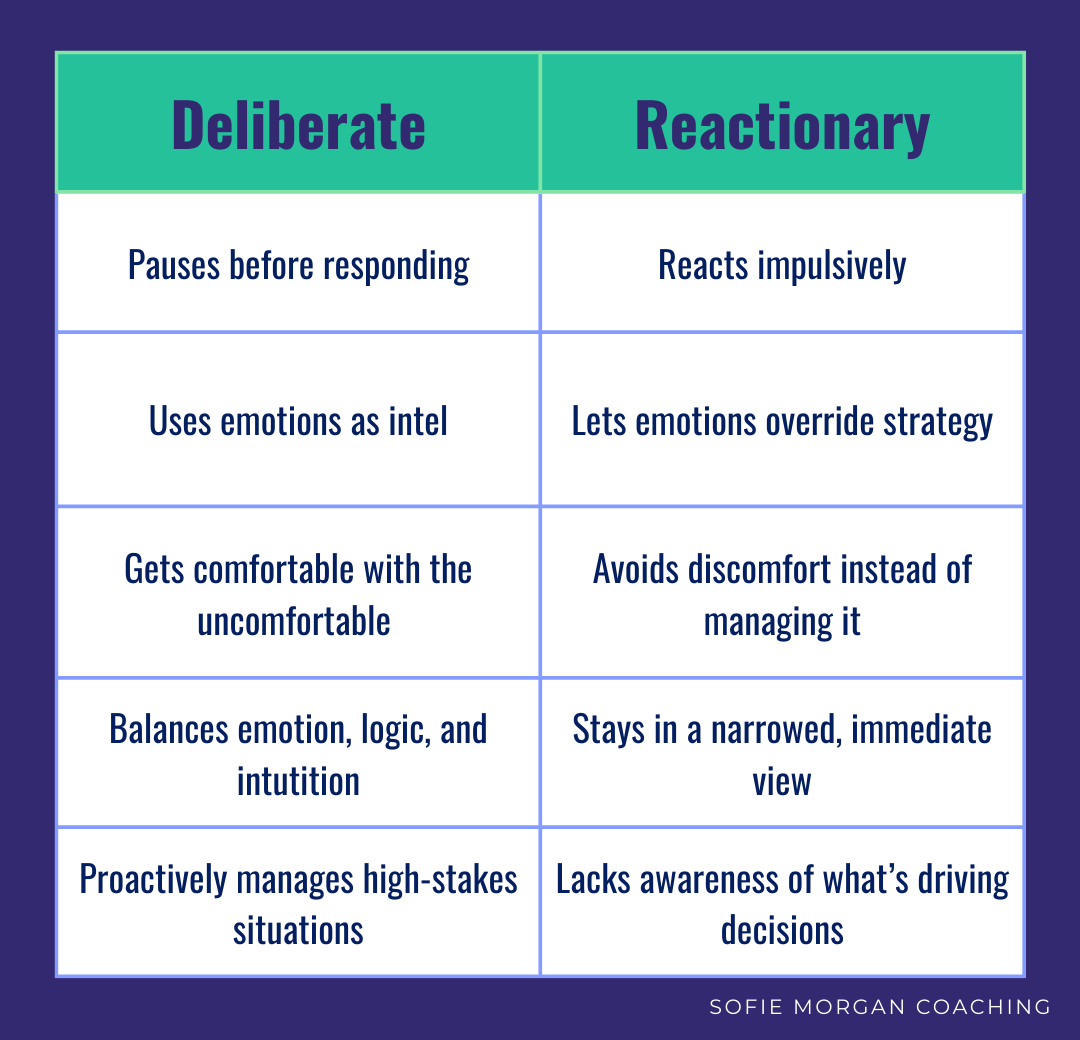Emotional Mastery for Leaders: A Practical Framework to Respond, Not React
Leadership often demands clarity in high-pressure moments, even when emotions are running high. This framework helps you recognize, regulate, and respond to emotions intentionally—so your inner state strengthens your outer impact.
Why Emotional Mastery Matters
Leadership often demands clarity at the very moment you feel emotionally flooded. Whether it’s a tense conversation, a critical decision, or simply being present with your spouse after a long day, how you manage your inner state shapes your outer impact.
Emotional mastery isn’t about suppressing feelings or staying calm at all costs. It’s about recognizing your emotional state and responding with intention. Heightened emotions narrow vision—a vestige of fight-or-flight. Developing the ability to respond rather than react is a skill that can be strengthened with practice.
When Emotions Cloud the Real Question
One client came into coaching excited about a job opportunity he’d been pursuing for months. After hearing concerning feedback about the company, he felt stuck and confused.
As we explored it, he realized his experience wasn’t indecision; it was grief. He was grieving the version of the job he thought it would be. Once he named that clearly, the path forward became less tangled. He stopped trying to justify a decision he didn’t want to make and started responding with clarity.
Moments like this are why emotional mastery matters: clarity often begins with emotional understanding.
Step One: Name What You’re Feeling
Clearly labeling your emotions helps regulate your nervous system and opens access to better thinking. It also distinguishes what you feel from what’s actually happening—critical for any leader.
Ask yourself:
What emotion is present for me right now?
Where do I feel it?
Is it new, or part of a familiar pattern?
Even this slight pause can shift what happens next.
The Emotional Mastery Framework: Before, During, After
Before the Moment: Prepare Your Internal State
Anticipate triggers
Shift energy through movement, breath, music, or a visual cue
Reframe the story you’re telling yourself
Ask: What kind of presence do I want to bring into this moment?
During the Moment: Stay With the Emotion
Allow the feeling to exist without judgment or escape
Let it move through you
Take a short pause if needed
Ask: What does this emotion need from me—movement, boundary, or perspective?
During the Moment: Observe & Zoom Out
Name the emotion clearly
Trace what might be fueling it
Offer yourself some grace
Ask: What version of me do I want leading this moment?
After the Moment: Reflect & Learn
Notice how you responded; what felt aligned or misaligned?
Look for patterns
Practice emotional awareness outside high-stakes moments
Ask: What response aligns with the kind of leader I want to be?
Noticing the Subtler Moments
Emotional mastery isn’t only for major decisions. It shows up in subtle daily interactions, even positive ones. Joy, relief, or validation can cloud judgment. Great leaders don’t second-guess joy, but they also don’t let euphoria override discernment.
One client noticed how drained he felt walking in the door after work. He wanted to be present with his spouse, but his energy was spent. His instinct was to push through. Over time, he realized that pausing just five minutes alone helped him reset. He stopped reacting out of depletion and started choosing how to show up. That small shift created meaningful change.
This is emotional leadership in action—the kind that begins quietly, inside yourself.
For a practical tool to sharpen this skill, see The Power of Naming Emotions.
If you want support applying emotional mastery to high-stakes situations, I work with leaders to strengthen clarity, presence, and impact.
